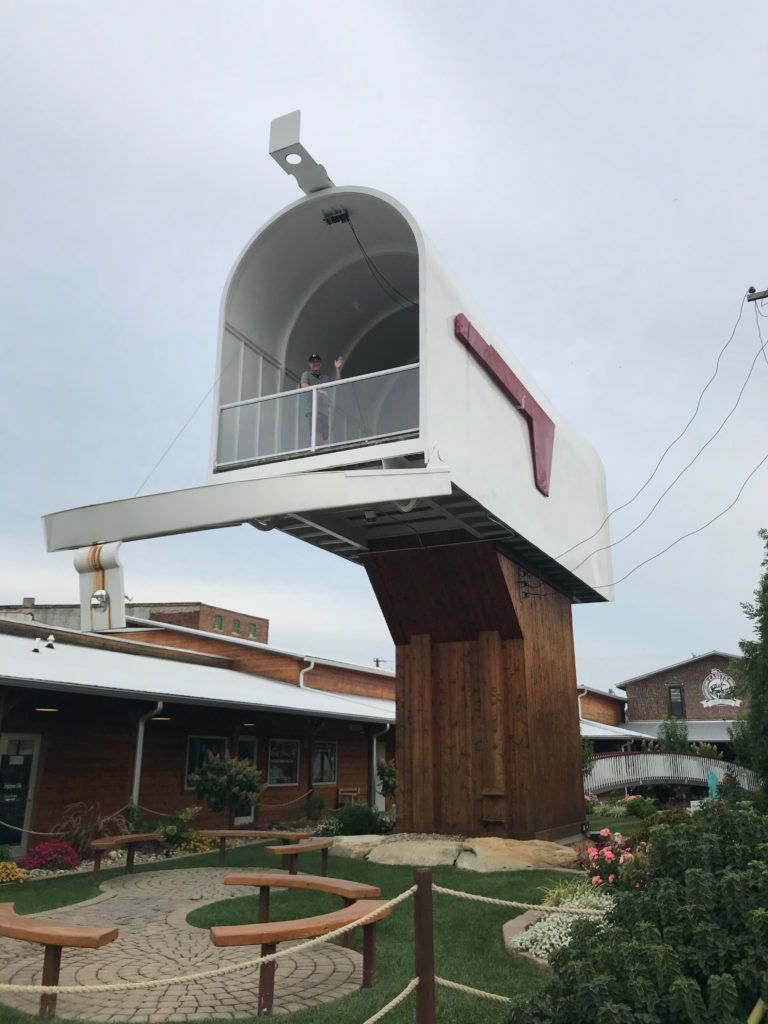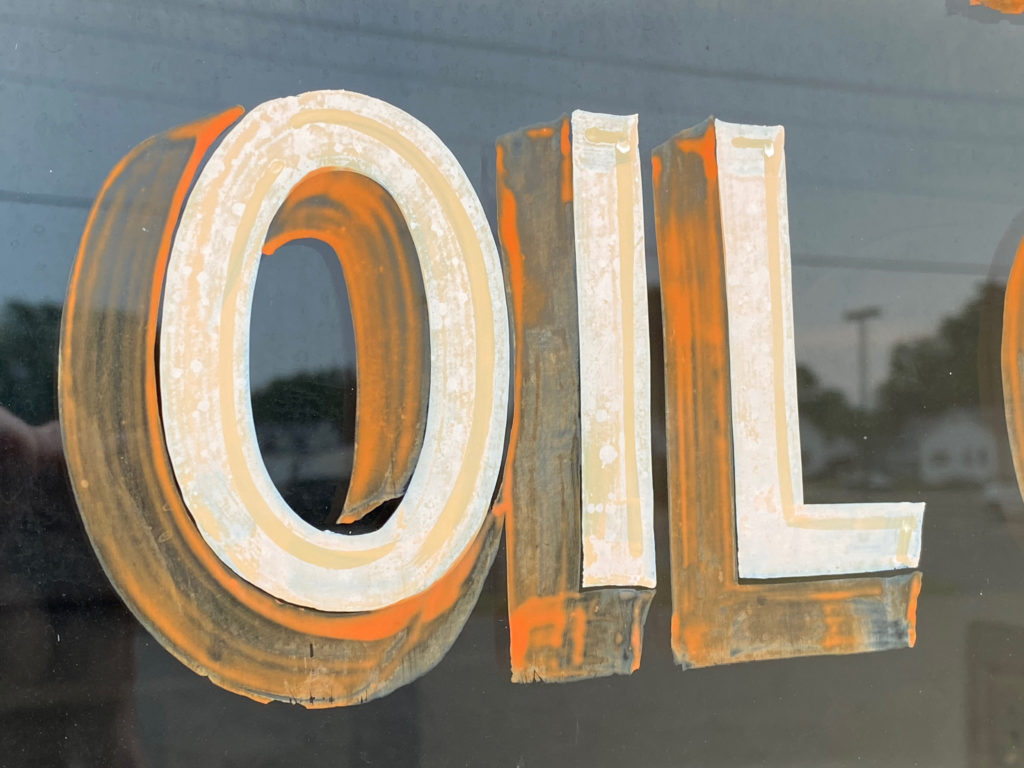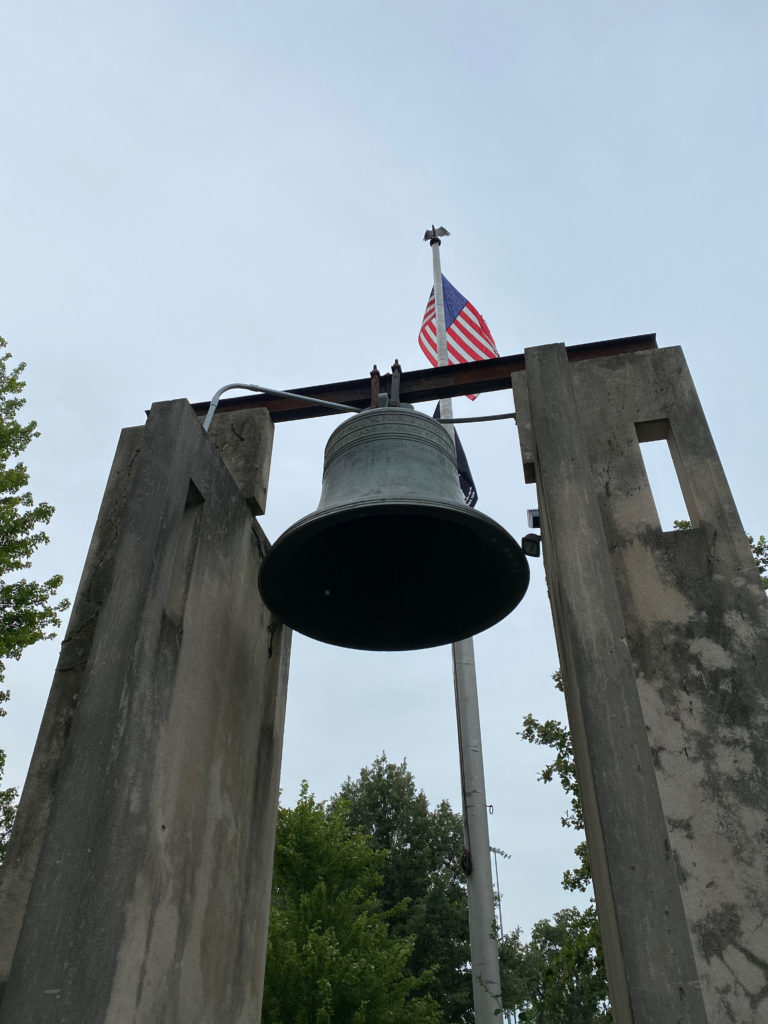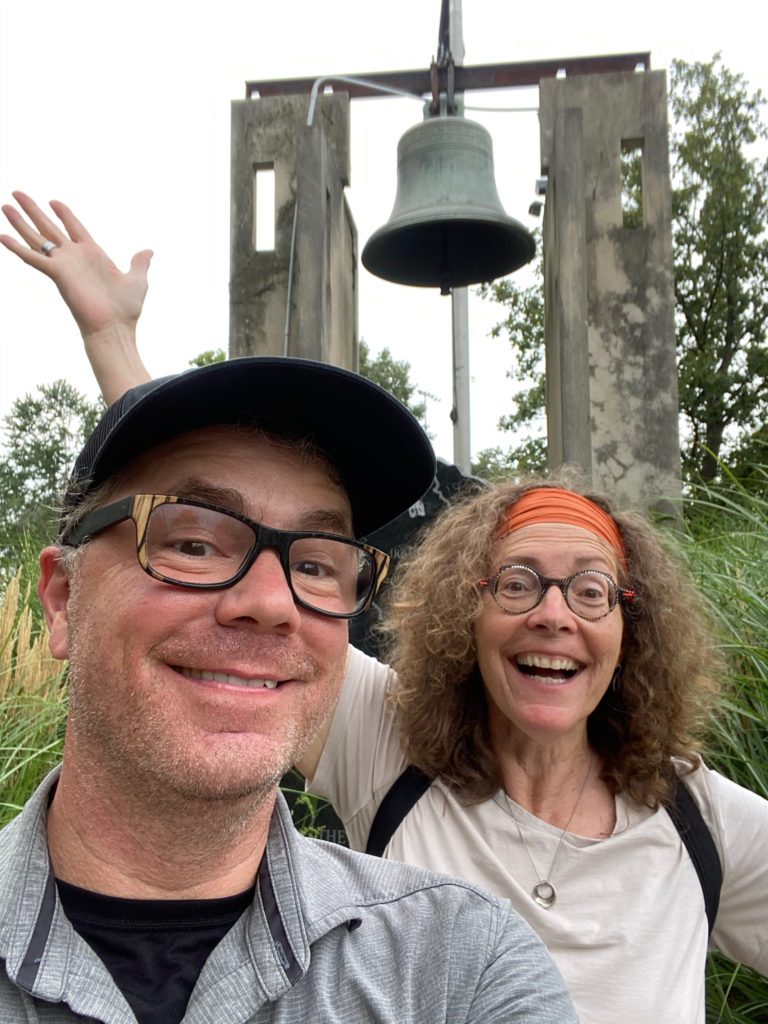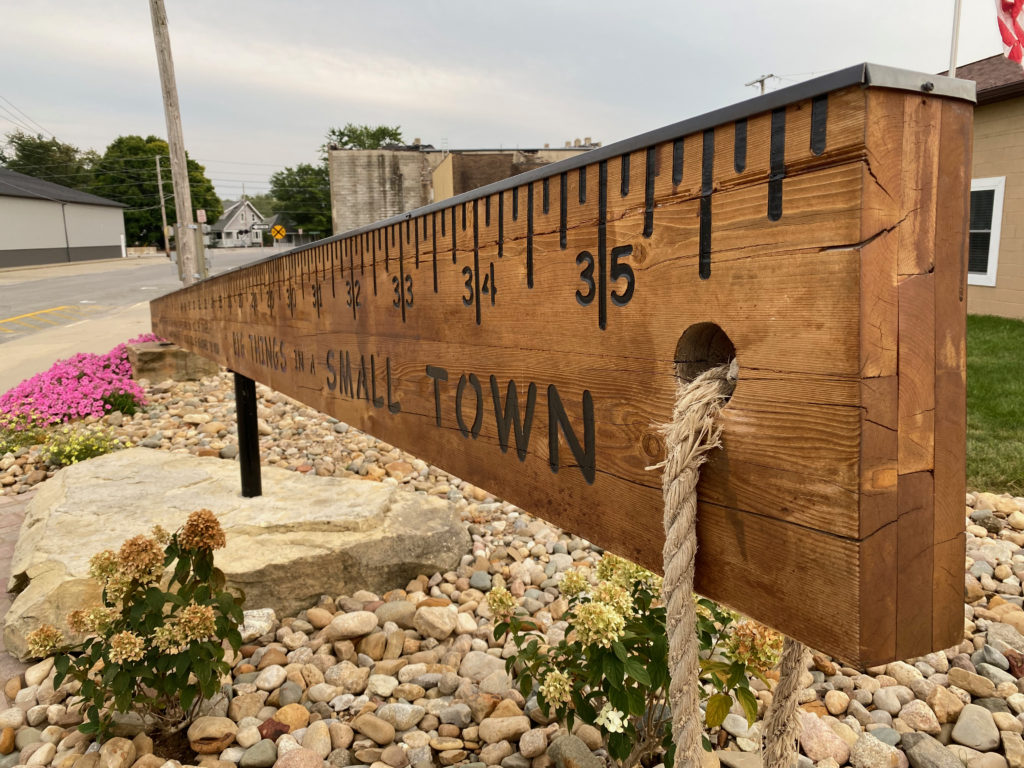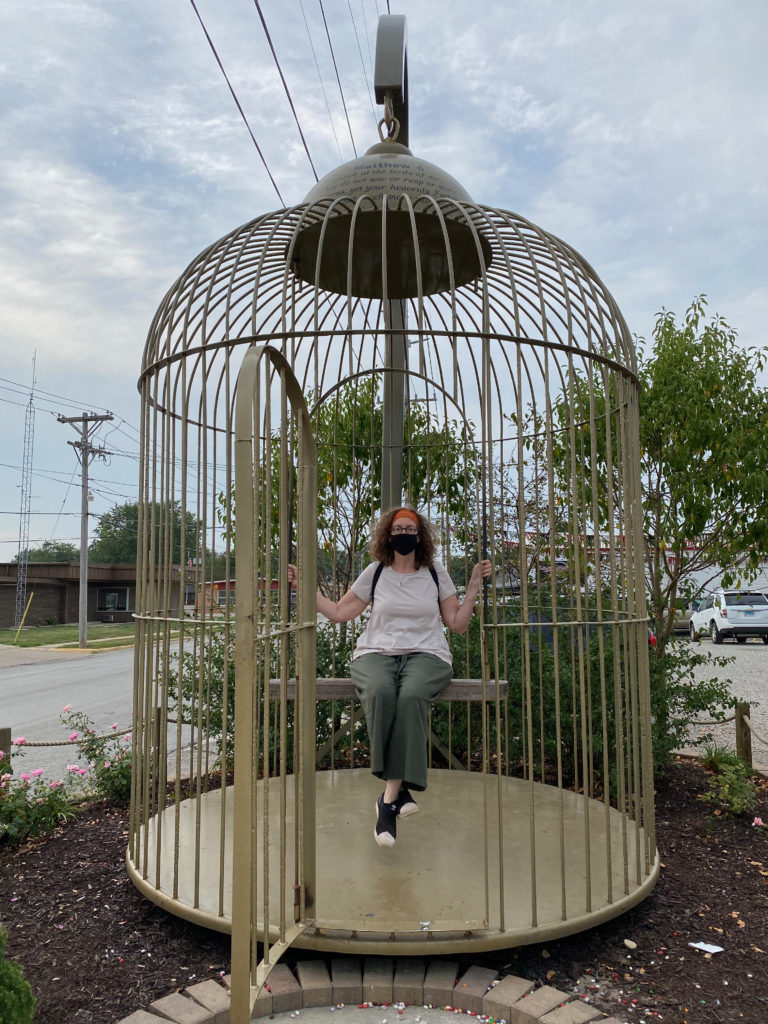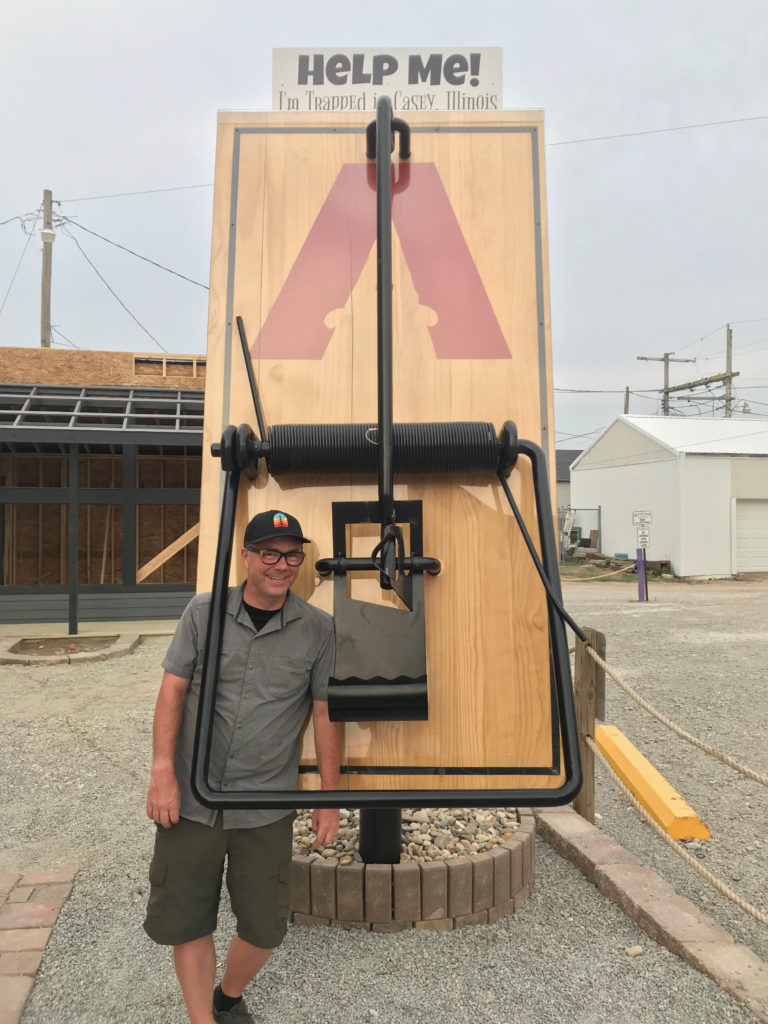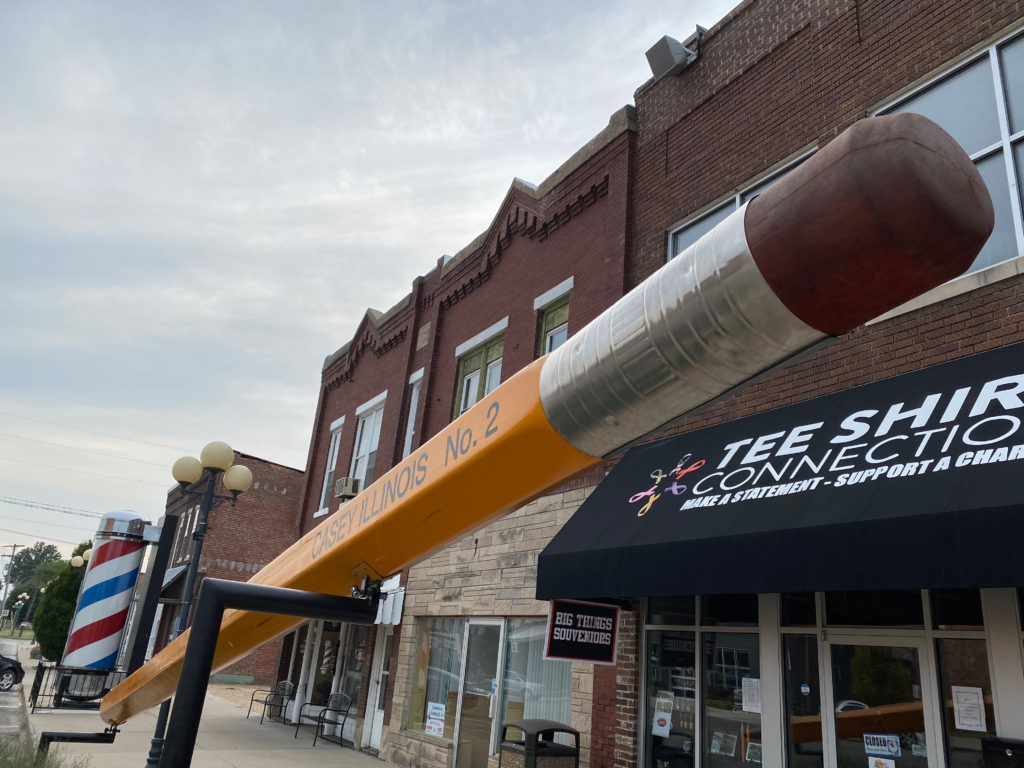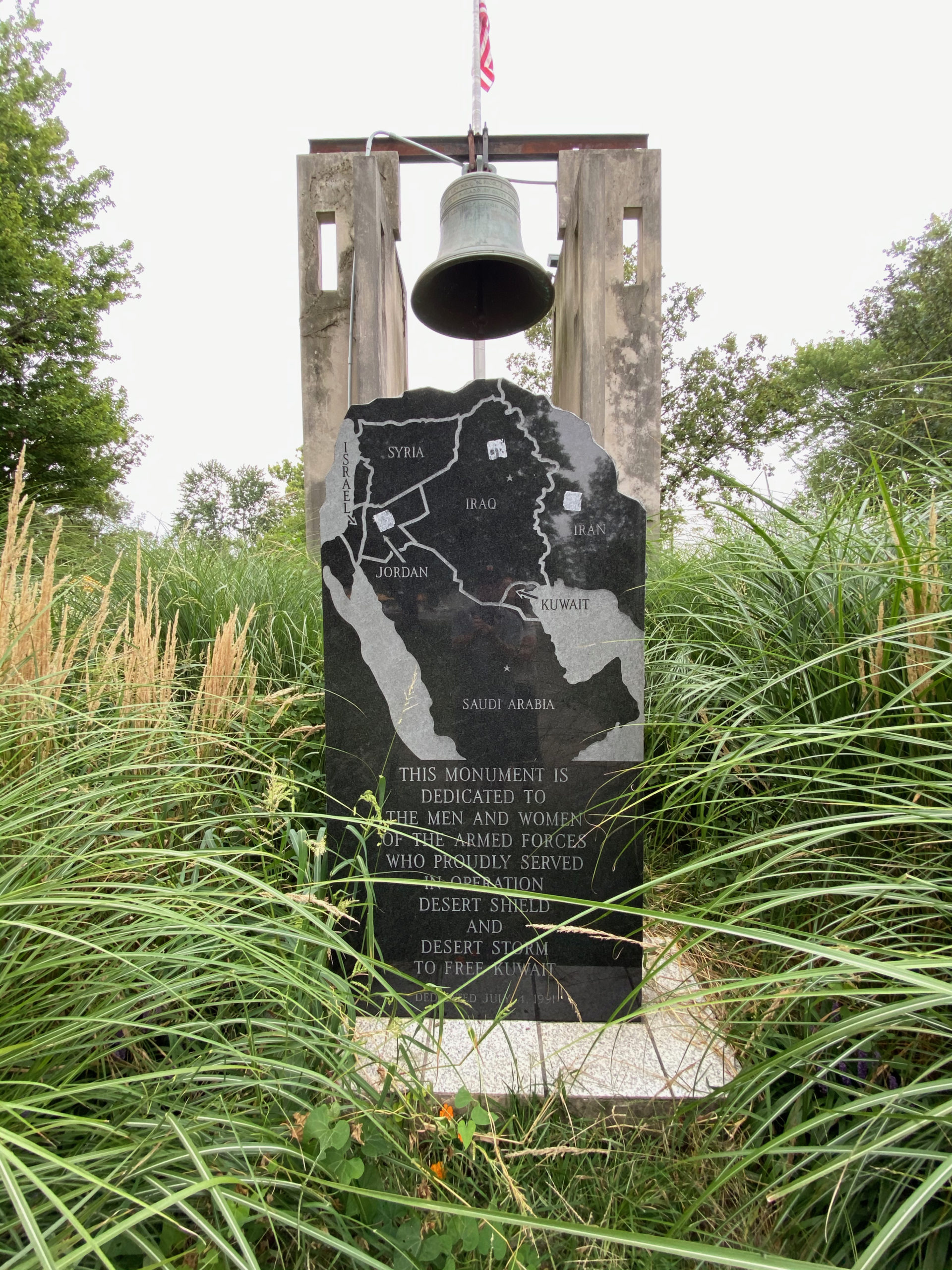2020 — Part 4:
The Charleston, Illinois Liberty Bell
And my heaven will be a big heaven
And I will walk through the front door
— Peter Gabriel, Big Time | So
Tonight we’ll be camping in a small town with a large claim to fame. Every place needs a hook. Dawn and I live in the Nappa Valley of Beer. I grew up in the Birthplace of Liberty, the City of Brotherly Love, the town that throws snowballs at Santa Claus (it was a drunk guy in a Santa suit, not the real Santa). Today we’re headed to Casey, Illinois, the little home to a dozen of the world’s largest things. It will be hard to beat Wisconsin’s only mosquito-free campground, where we spent the last three nights, but Casey might be up to the task.
First, we’ll make a quick stop at another small town with big bragging rites. Charleston, Illinois, is where, in 1858, Senatorial candidate Abraham Lincoln famously refuted his opponent’s accusation that he favored racial equality. Here’s a snippet:
I am not, nor ever have been, in favor of bringing about in any way the social and political equality of the white and black races, [the crowd applauds] — that I am not nor ever have been in favor of making voters or jurors of negroes, nor of qualifying them to hold office, nor to intermarry with white people; and I will say in addition to this that there is a physical difference between the white and black races which I believe will forever forbid the two races living together on terms of social and political equality.
—Abraham Lincoln, September 18, 1858 | Charleston, Illinois
It would seem the Great Emancipator got greater at emancipating as his career progressed. Honest Abe went on to admit he wasn’t a fan of slavery, but that didn’t mean he wanted a black wife. That one got a big laugh. But that’s not why we’re in Charleston. We’re here to see the Liberty Bell.

In anticipation of the U.S. Bicentennial, London’s Whitechapel Bell Foundry launches a brilliant marketing campaign. They will produce a limited edition of *100 Liberty Bell replicas cast in the same mold pit as the original. Each state will get two, and towns are expected to fight for their right to party like it’s 1776. Ten thousand dollars per bell. First come, first served.
In 1975 Charleston wants a Liberty Bell, hard. Betty Boyer and Joe Ethridge, Co-Chairs of the town’s Bicentennial Committee, have a lot of work to do and little time to do it. They secure three possible locations: Morton Park, the Coles County Courthouse lawn, or in front of Old Main on the campus of Eastern Illinois University. Boyer would later reflect on the committee’s goal. “We were trying to find something that would commemorate the Bicentennial permanently, kind of a gift to Charleston.” The bell will first toll on Independence Day, 1976.
The group estimates they’ll need to raise the majority of funds through private donations: $10,000 for the bell and another $10,000 to house it. Donors who contribute $250 or more will have their names inscribed on a bronze Patriots of ’76 plaque to accompany the bell. All donors will have their stories captured in a booklet to be placed in a time capsule along with other pertinent objects. Volunteer fundraisers sold 300 flowering crab trees and self-published Coles County history books. The trees made money. The history books broke even.
Charleston must pay for the bell in full by July 15, 1975, or the city will relinquish its claim and let one of five other Illinois communities purchase it. Fundraising efforts fall just short of the goal, but the city kicks in to cover the deficit. Charleston will get their Liberty Bell. The Courthouse is ruled out as city engineers fear the bell’s weight could collapse underground tunnels.
On June 18, 1976, a 65-foot boom crane slowly raises the first of two t-shaped Bedford Limestone supports into place at the center of Morton Park. The material is selected for its strength and durability. Known outside of Illinois as Indiana Limestone, it ages and weathers well and has been used in monumental structures like the Empire State Building, Pentagon and Nebraska State Capitol.
The most delicate part of the 4-hour process comes when stonemasons match holes drilled into the bottom of the limestone slabs with rebar jutting up from concrete foundations sunk four feet underground. By noon the housing is finished. But the main attraction won’t arrive for another month. Independence Day, 1976 comes and goes in Charleston without freedom’s ring. But never fear; the Bicentennial is a year-long party. On July 26, the Liberty Bell comes to town.
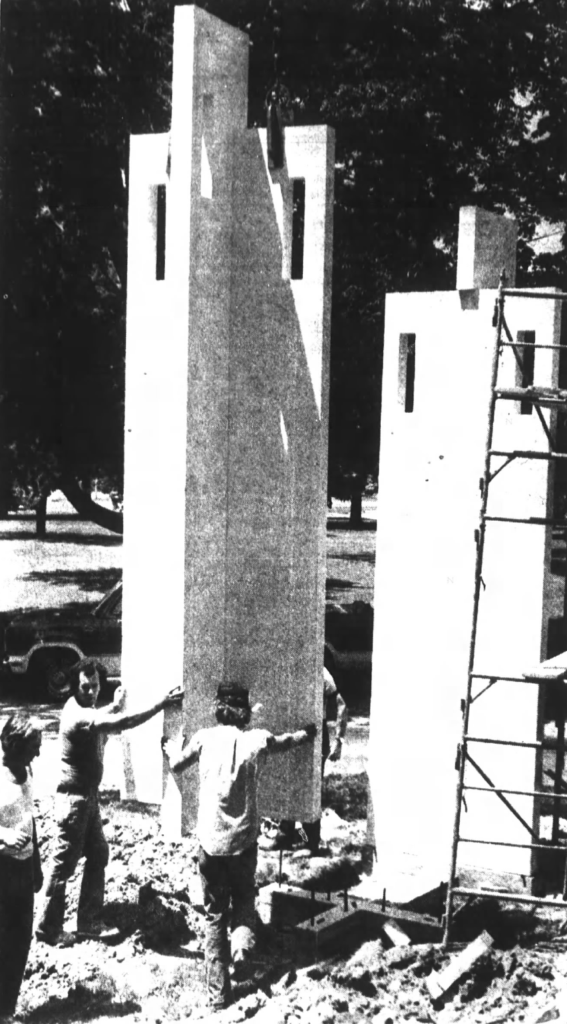
On the last day of July, billed as Freedom of Speech Day, about 800 Charlestontonians brave the sweltering heat as a 24-piece brass band from EIU kicks off the Liberty Bell dedication ceremony. Congressional candidates from both parties hand out hotdogs and make dueling stump speeches at Morton Park’s two pavilions. Presumably, they both profess to be in favor of racial equality.
Noted Lincoln impersonator Richard Blake dons a stovepipe hat and recounts some of Abe’s more palatable speeches. Congressman George Shipley delivers the keynote address, invoking perhaps the only American orator who can out-zing Lincoln. Attempting to illustrate the importance of participatory democracy, he tells the crowd of Ben Franklin leaving Independence Hall after the Constitutional Convention in 1787. A passerby asks, “Doctor, what have we got? A republic or a monarchy?” Franklin retorts, “A republic. If you can keep it.”
Boyer and Ethridge are on hand to give the rope a hearty tug and let their hometown hear the Liberty Bell for the first time. But before they can reap the fruits of their labor, a precocious child steps up and pulls the rope. The kid exerts just enough power for the clapper to make contact with the rim of the bell. And like that, the Charleston Liberty Bell is christened.
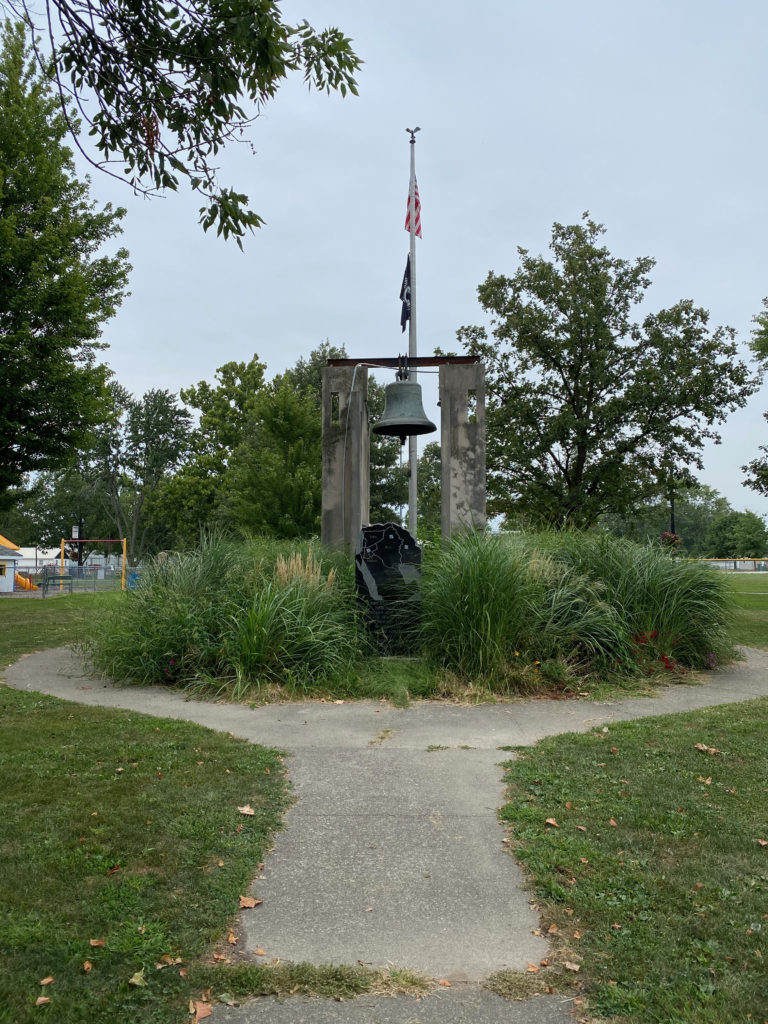
Morton Park remains a central gathering place in Charleston. It hosts the city’s annual Red, White and Blue Days, drawing artists like Sammy Kershaw and Trace Adkins. The Liberty Bell tolls every Independence Day at 2:15 p.m.
As 1999 gives way to 2000, the bell peals out at the top of every hour to celebrate the dawning of the new millennium in each of the world’s 24 time zones.
Despite its height, it’s not easy to spot the Liberty Bell from the street. Today, Morton Park could be described as well-loved, if not pristine. A baseball diamond and a dozen horseshoe pits occupy a quarter of the one-block park. On the southeast corner, chainsawed out of a log, is a comically folksy, tiny-headed Abe Lincoln statue. The log-to-Abe ratio and his pained expression make it look more like he’s being consumed by the log than emerging from it.
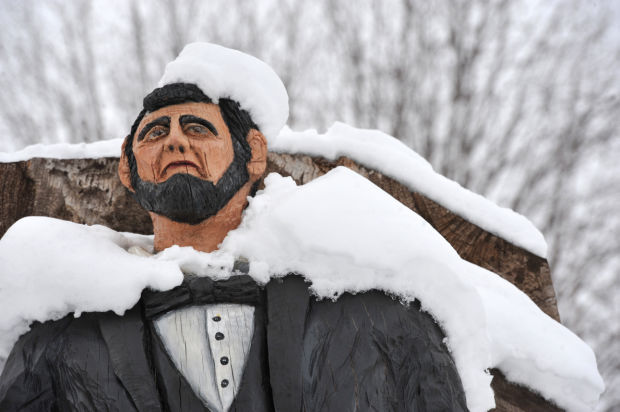
Up close, Charleston’s Liberty monument gives you the feeling 1976 was a lot more than 44 years ago. While the limestone stanchions are structurally sound, they’re long overdue for a power-washing. A well-intentioned but poorly placed Desert Shield/Desert Storm memorial blocks sightlines of the bell. The landscaping has either been designed to discourage folks from approaching the bell, or it’s just been abandoned altogether. The Patriots of ’76 plaque is almost completely obscured by tall grass. I had to bushwhack to get a photo.
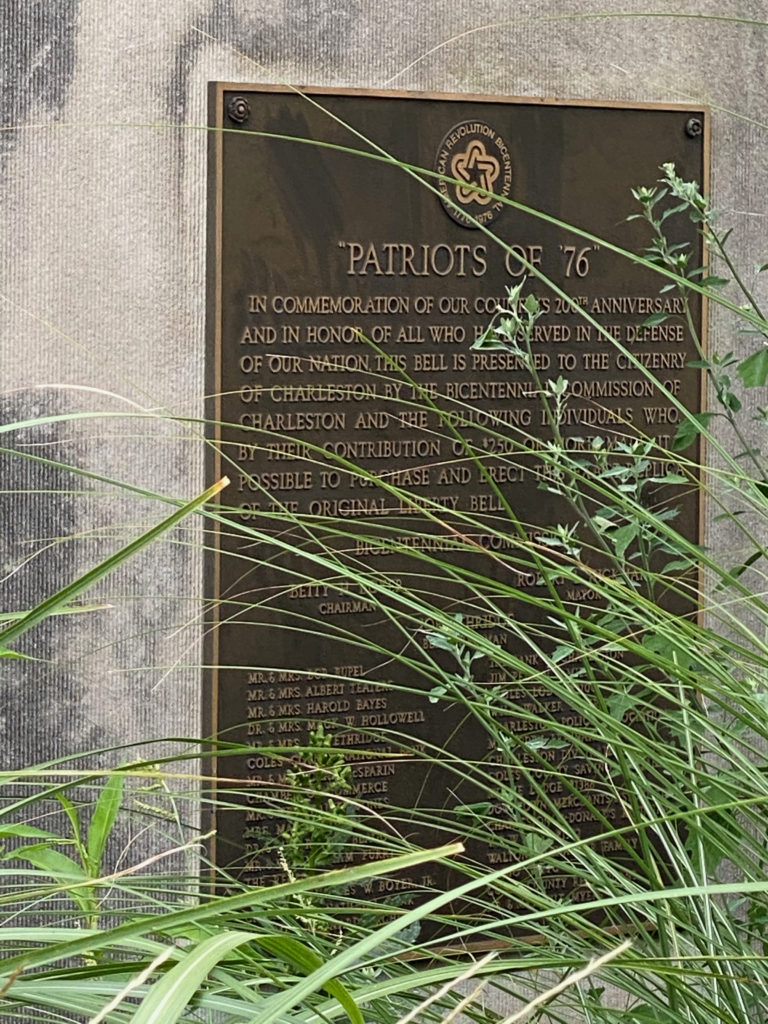
If this were the before times, we’d walk around downtown, pop into the local shops, and check out a museum. Our best travel experiences come when we wander — letting unforeseen forces draw us this way or that, hunting floaty pens or discovering local delicacies. But we won’t be doing that on this trip. We’ve packed enough beer, bread and lunchmeat to get us to Connecticut, and we’re staying outdoors except for the necessary masked-up, disinfectant-drenched pitstops.

There might be no other town better suited for 2020 travel than Casey, Illinois. The town has one stoplight and a dozen of the world’s largest things, most of them outdoors. Additionally, Casey has a collection of not officially record-setting, but nonetheless gigantic things.
In 2009, Jim Bolin, the owner of an eponymous pipeline maintenance company in Casey, had an idea. He’d string up some pipes and reimagine them as the world’s largest wind chimes. Most towns, like Darwin, Minnesota, would stop there, content to host one giant thing. But Bolin persisted. Once he learned to navigate the Guinness certification process and got a taste of the big-time, he was hooked.
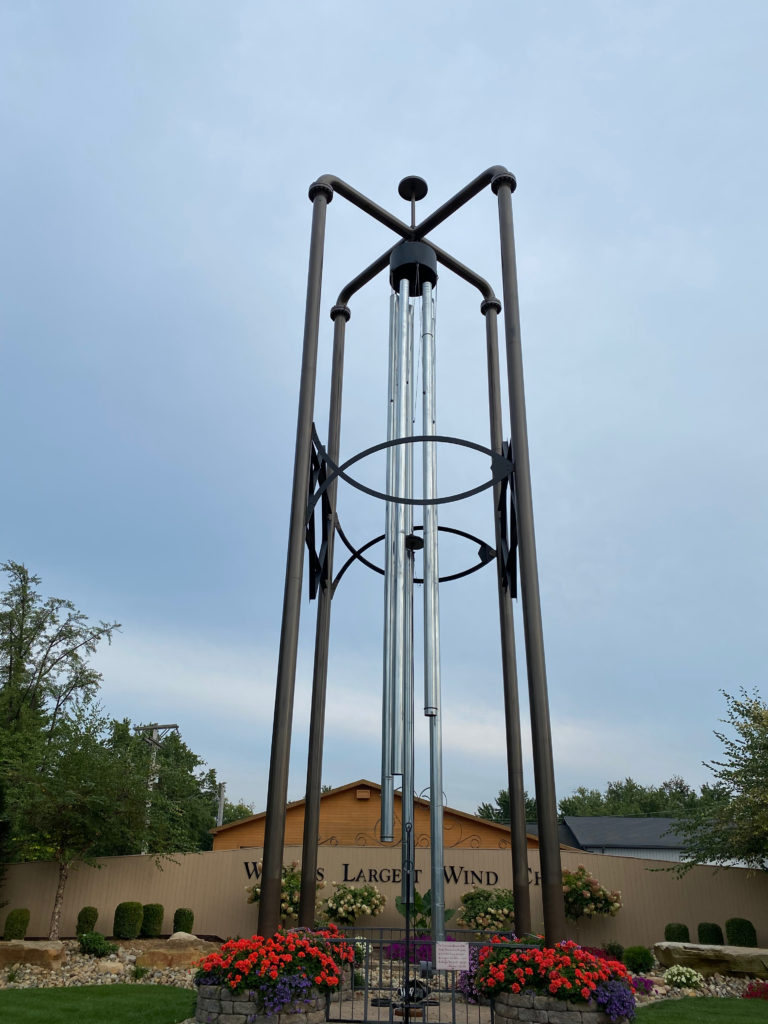
We roll into Casey road-weary, hungry and curious, with just enough time to see the sights and set up camp before dark. The first thing we notice is a rocking chair that would make Godzilla want to take a load off.
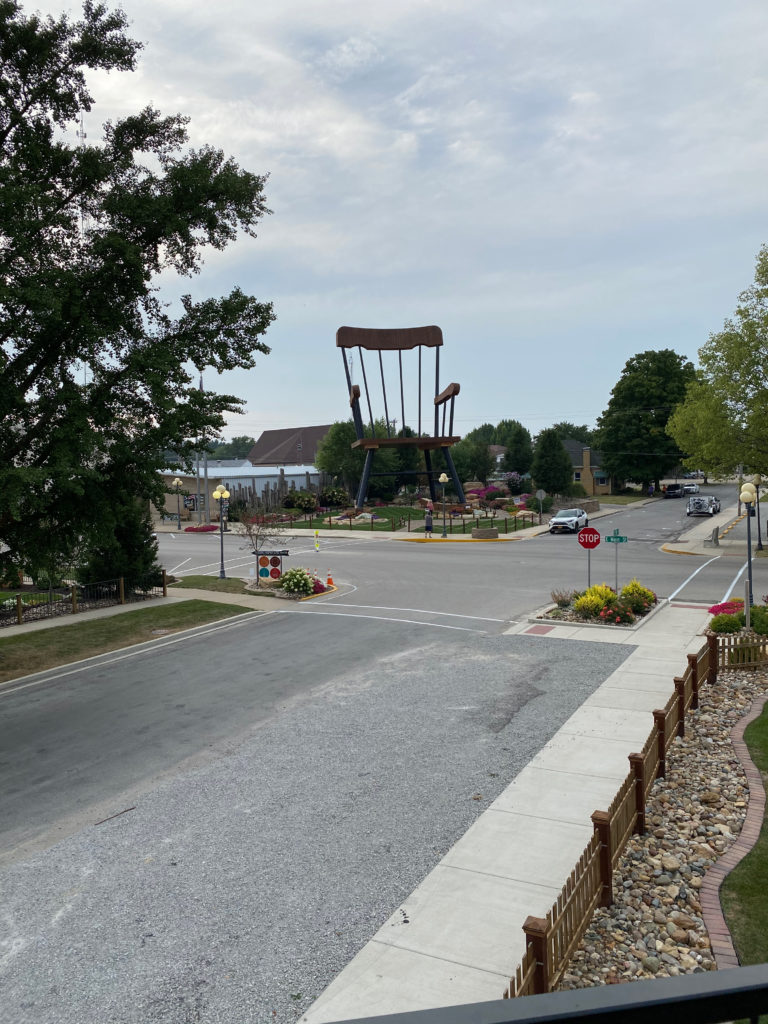
We hit the street and start wandering. Nothing is open, and that’s just fine. There are a handful of other folks doing what we’re doing, a safe distance away. There is more than enough big to go around.
Catty-corner from the rocker is the world’s largest seesaw. Like a footbridge to nowhere, it occupies most of a beautifully landscaped corner park. The teeter-totter is all ours. We enter through the open gate and cautiously walk the plank. As we pass the fulcrum, our anticipation builds. Physics and gravity are about to get as entertaining as they get. But instead of tipping the scales, we keep climbing higher until we reach the end. It seems the seesaw is locked in this position. Later we’ll find out that while the Lord might demand accurate scales and balances, this teeter only totters on Saturdays during tourist season.
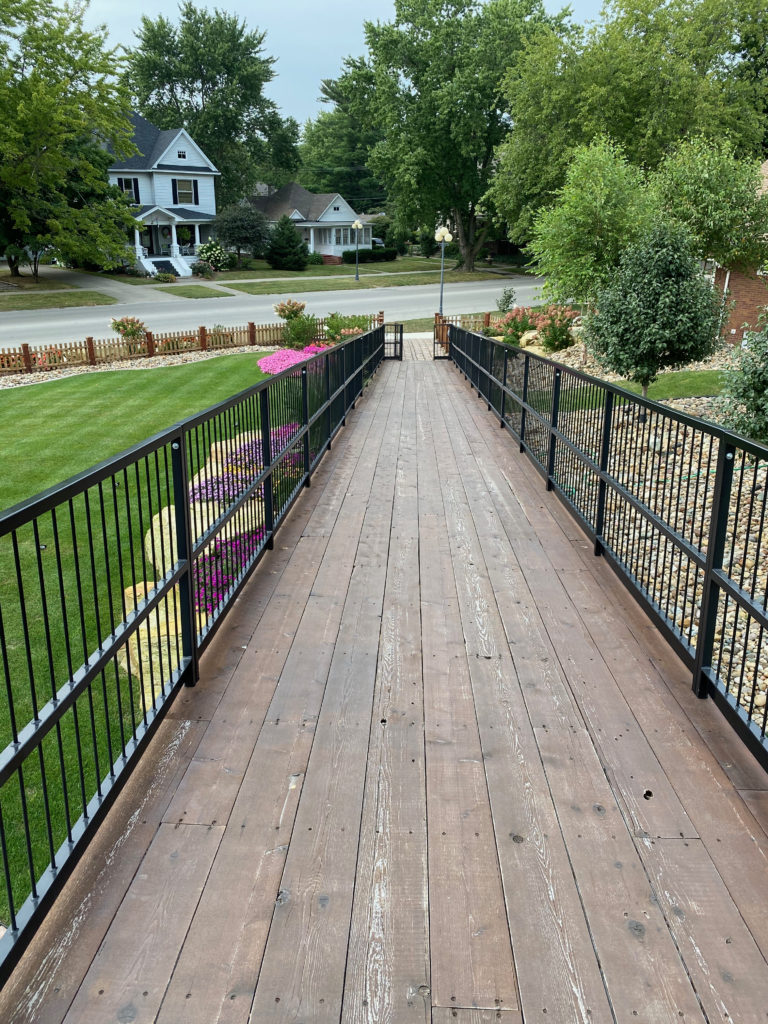
Like the bill collector at the end of It’s a Wonderful Life, who tears up the warrant, tosses his change in the hat, and joins that party — the bureaucrats in charge of Casey’s sign code have caught giant fever. Instead of homogenous, gaudy, flashing signs, there’s a giant wooden nickel in front of the bank, massive antlers, pizza slicer, barber pole and a gargantuan bookwork weaving its way through the library’s front lawn.
Casey, Illinois, is a wonderfully bizarre stop on an already strange trip. We settle in at the KOA, enjoy sandwiches and some beers, and turn in early for a good night’s sleep.
Tomorrow will be my forty-eighth birthday and my first day ever in Ohio.
PART 5: 2,000 MILES
